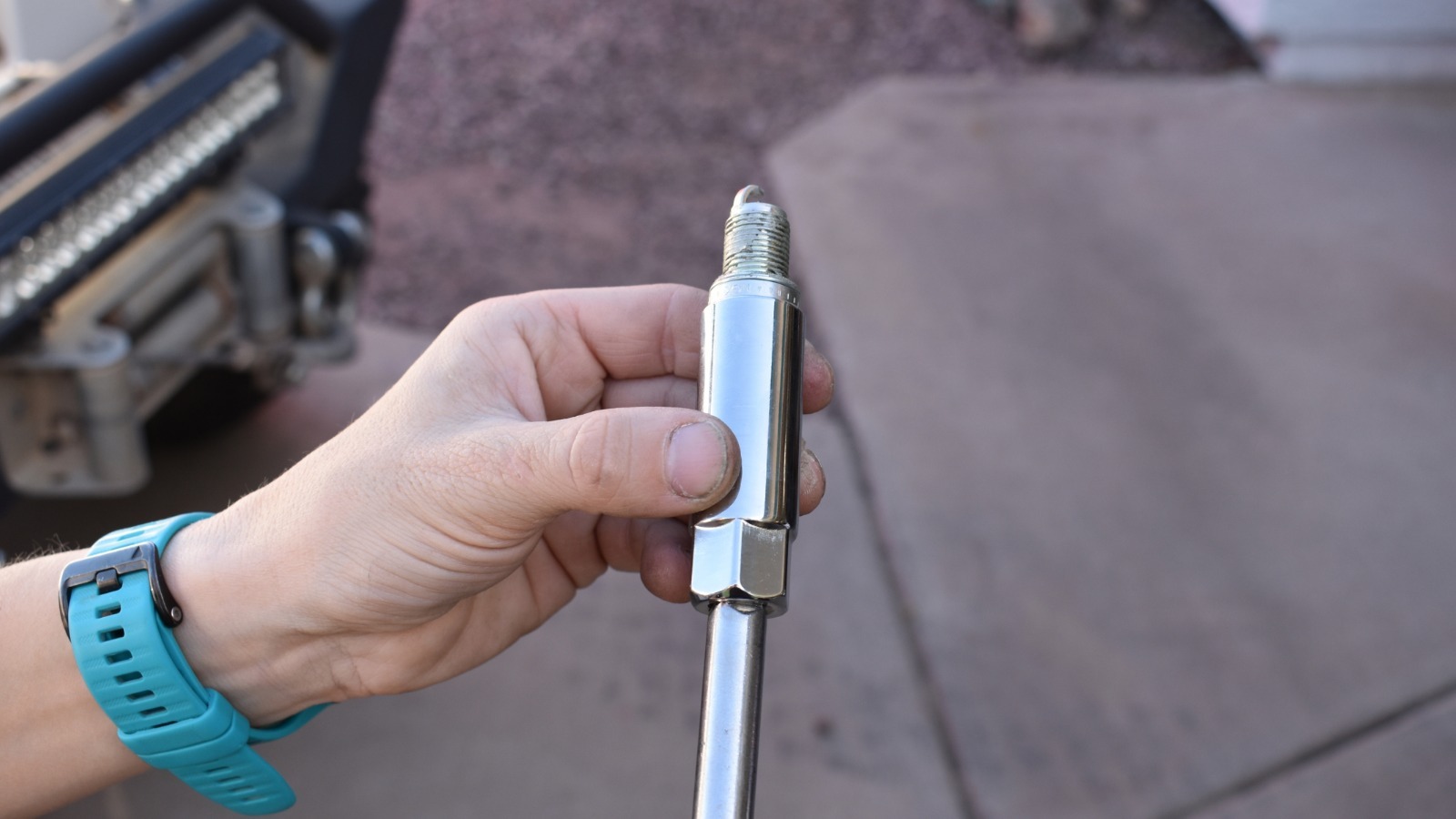Spark plugs are integral components for gas-powered internal combustion engines. These diminutive devices create the electric spark that ignites the fuel and air mixture inside your motor. When ignited, that mixture explodes, propelling the pistons up and down, causing the crankshaft to spin, and sending power to your car’s wheels.
Advertisement
Spark plugs work by screwing into the engine’s cylinder head on one end and connecting to a series of cables or coil packs on the other end. The cylinder-head-end contains a center electrode and a ground electrode, while the other end connects to the vehicle’s ignition system. When you turn the keys to start the engine, electricity flows through the cables or coil packs and causes the ground and center electrodes to create a spark, which ignites the fuel/air mixture and powers your engine.
While spark plugs are durable components, they don’t last forever. In fact, spark plugs are a regular maintenance item for the majority of vehicles. The frequency with which you need to replace your spark plugs will depend on your car’s make and model, and the intervals can range from every 30,000 miles to every 100,000 miles. You’ll also need to perform a replacement if you have a bad spark plug causing a problem like engine misfires. However, when it is time to replace your spark plugs, you can’t use just any tool to complete the job — you’ll need a special device known as a spark plug socket. While most spark plugs require a ⅝-inch or roughly 16-millimeter socket, others use sizes ranging from 9/16-inches or 14-millimeters to ⅞-inches. Let’s dive in and explore spark plug sockets in greater detail, including how to know what size your vehicle needs.
Advertisement
As mentioned, the most common spark plug socket sizes are ⅝-inches and 9/16-inches. Many socket sets and mechanic’s tool sets come with one or more spark plug sockets in the most common sizes. However, if you don’t know what size spark plug socket your car requires, it isn’t too difficult to identify the spark plug brand and size that your vehicle uses, and there are several methods you can use to learn this information.
Advertisement
One of the quickest ways to learn more about your car’s spark plugs is to look the info up in your vehicle owner’s manual. You should be able to find replacement intervals and information about the type of spark plugs that your vehicle’s engine needs. If your car is available in multiple trim levels or with different engine options, the manual will provide you with the proper spark plug specifications for each engine. Even if the manual doesn’t explicitly state the necessary spark plug socket size, you can look up the part number for the spark plugs online and view the hex size that way.
If you’ve lost your owner’s manual, though, you still have some other options. Calling the dealership and asking for the socket size is quick and easy. Alternatively, you can take a trip to your local auto parts store and ask an employee to look the information up for you. While you’re there, you can go ahead and grab the socket. Finally, if none of those options sound appealing to you, you can always use the internet.
Advertisement
If you’ve already got the right spark plug socket for your car and are curious about how to perform a replacement, we’ve got you covered. In addition to your spark plug socket, you’ll also need a ratchet, an extension, a torque wrench, a gap tool, dielectric grease, and some new spark plugs. Those are the basic tools, but depending on your vehicle, you may also need new spark plug wires, screwdrivers, pliers, a wobble extension, an impact driver, and various other devices.
Advertisement
Once you have your tools, you can get started on the following steps.
Open your car’s hood and disconnect the battery.
Remove any engine covers, intake tubes, or other components obstructing access to the valve cover.
Identify the spark plug wires or coil packs.
Remove the old wires and throw them away or disconnect the coil packs and remove them but remember where they came from.
Use your spark plug socket, extension, and ratchet to remove the old plugs.
Remove your new plugs from their packaging, check the gap if applicable, and screw them into the engine (only finger tighten the plugs, and do not use a power tool to install them).
Use your torque wrench to tighten the new spark plugs to the appropriate specification.
Advertisement
Place a small amount of dielectric grease on the boot at the bottom of your new wires or the coil packs and install them.
Replace any components that you removed.
Reconnect the battery.
Start your engine to ensure that it runs properly.
Remember that the above steps represent a generalized outline. The actual steps for your car will depend on its make and model, and you should consult your repair manual before you get started.
